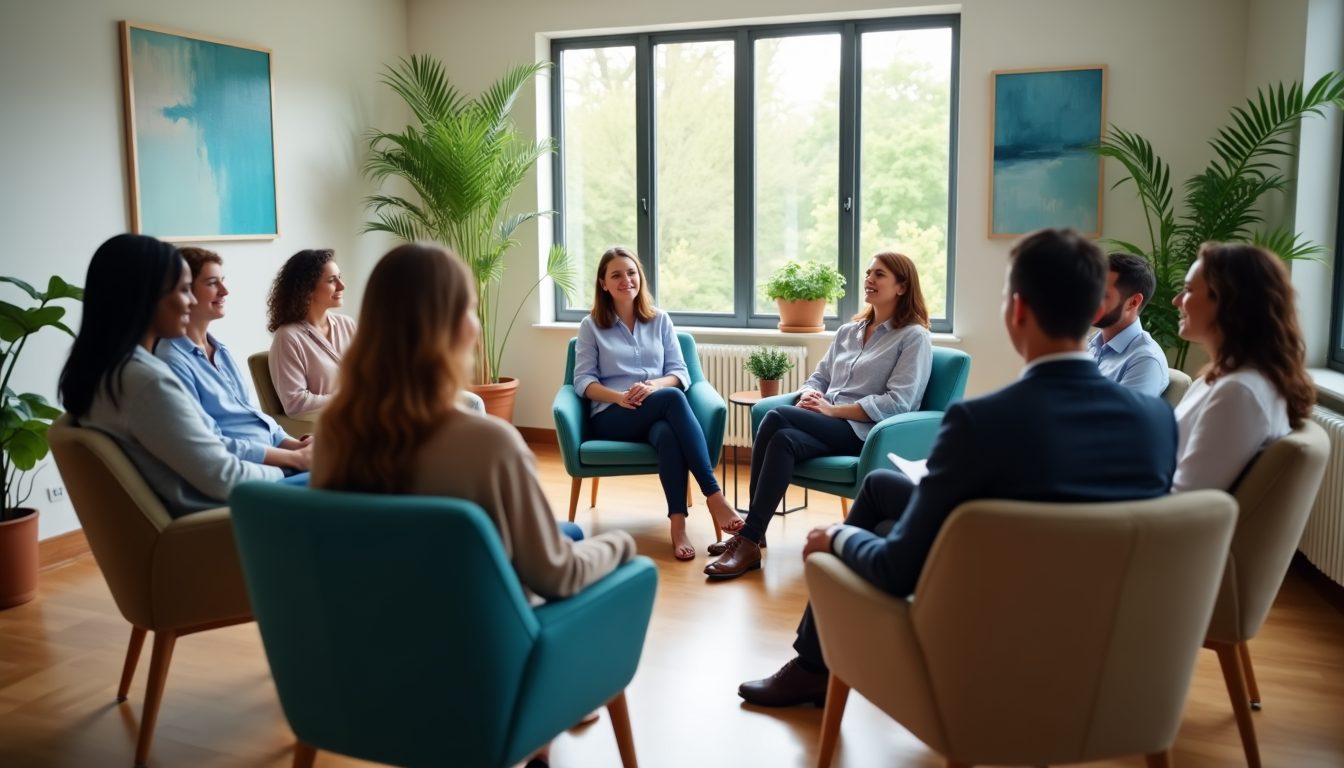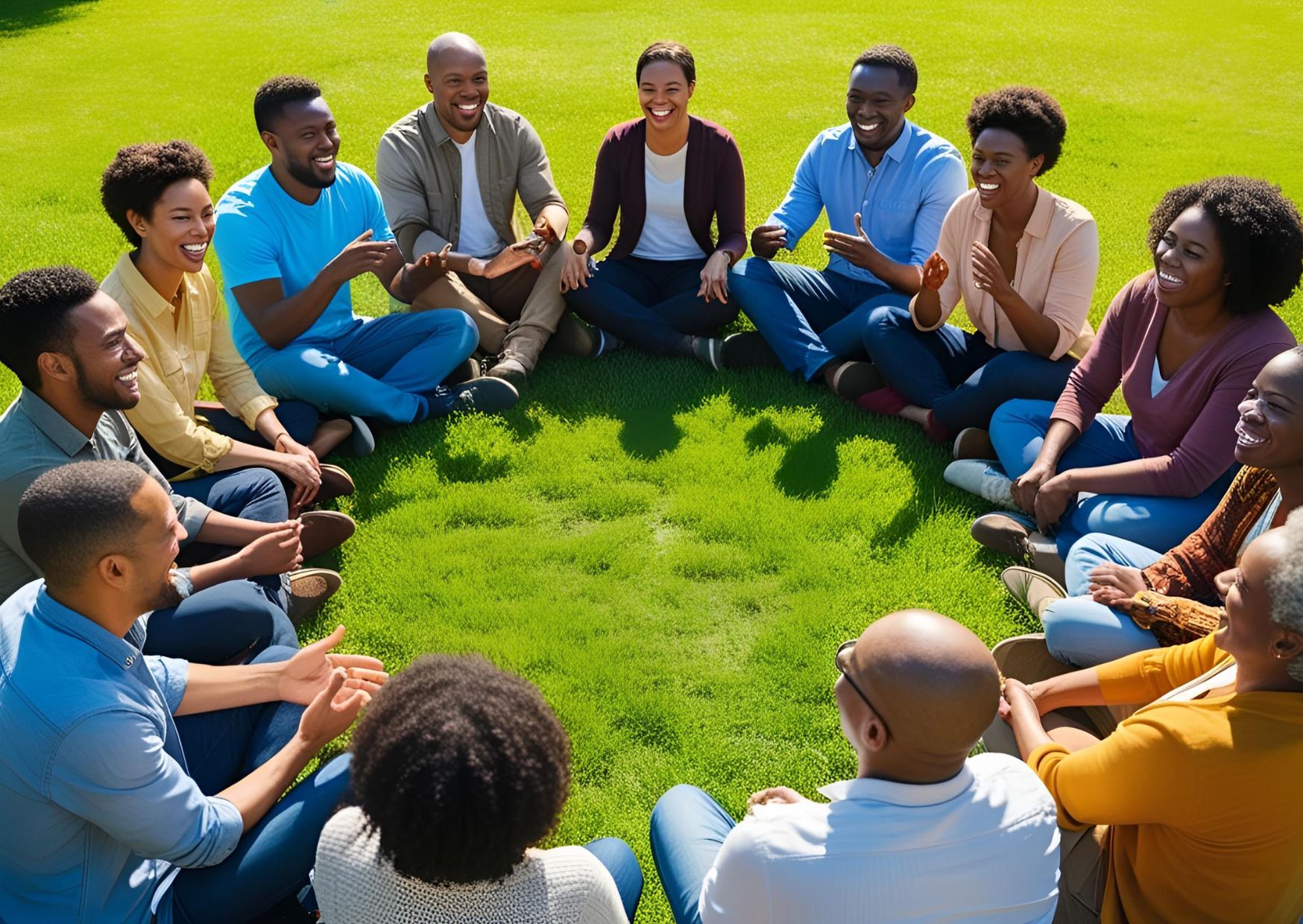Group Therapy: Why Healing Together Works Better Than Alone [2025 Guide]
Scientific studies show group therapy works exceptionally well. Patients show a 44% improvement rate in their conditions, which increases to 57% during follow-up periods. A detailed review of 48 clinical trials reveals this shared healing method delivers powerful results with a 1.03 effect size in symptom reduction.
Group therapy matches individual sessions’ effectiveness and provides additional benefits. The therapy’s dropout rates stay lower than individual treatment. It helps people deal with depression, anxiety, and chronic pain while creating a supportive healing environment. This piece covers everything in group therapy and includes practical steps to begin your journey.
What is Group Therapy and How Does it Work
Psychotherapy groups bring together five to fifteen people with a trained psychologist or two leading the sessions. Members meet weekly for one to two hours. They sit in a circle so everyone can see and talk to each other easily.
Simple principles of group therapy
Several therapeutic principles are the foundations of healing and personal growth in group therapy. Members find strength when they realize others share their experiences and challenges. The group setting lets participants help each other, which builds their self-esteem through supporting others.
These sessions work like a healing family experience where members can work through their old relationship patterns. Participants learn better ways to communicate when they get honest feedback about how they interact with others.
Key elements that make it effective
A strong sense of group unity is the life-blood of successful therapy. This creates belonging and acceptance that helps people share openly. Each member’s unique background offers fresh viewpoints on solving problems.
Trust and privacy are essential parts of the therapy process. While complete secrecy isn’t possible, members agree to keep shared information private. The therapist guides the process and creates a respectful space where everyone feels protected from unfair treatment.
Different types of therapy groups
Groups come in two main types: open and closed. New members can join open groups anytime, which offers flexibility but needs adjustment time. Closed groups keep the same members throughout, which builds deeper connections.
Here are some specialized formats:
- Psychoeducational Groups: Teach information and coping skills for specific psychological issues
- Skills Development Groups: Build social, cognitive, and emotional skills through exercises and role-play
- Cognitive Behavioral Groups: Help people spot and change negative thought patterns that affect their behavior and emotions
- Support Groups: Give emotional and practical help to people with similar experiences
- Process-Oriented Groups: Work on relationships and current group dynamics
Finding the right group depends on your challenges, goals, and how comfortable you feel with group settings. Some people benefit from mixing group and individual therapy, as this combination can speed up positive changes.
Groups help with specific conditions like depression, anxiety, chronic pain, substance abuse, or grief. They also tackle broader challenges like anger management, shyness, loneliness, and low self-esteem through planned activities and peer support.
The Science Behind Group Healing
“Group therapy is superior to individual therapy in providing social learning and in helping clients develop social support and improve social networks.” — Irvin D. Yalom, Professor Emeritus of Psychiatry at Stanford University, pioneer in group psychotherapy
The latest neuroscience discoveries tell us something amazing about how group therapy changes our brain function and helps us heal. Brain scans show the most important changes in neural pathways after group therapy sessions, especially when you have regions tied to emotional control and social bonds.
Research on group therapy effectiveness
Clinical studies show how group therapy helps people of all conditions. Cognitive behavioral group therapy creates noticeable changes in brain structure, particularly in areas connected to social anxiety disorder symptoms. Group psychotherapy works just as well as one-on-one therapy to treat anxiety, depression, grief, eating disorders, and schizophrenia.
Brain scans using functional MRI prove that group therapy helps normalize brain activity where we process threats and fear memories. On top of that, studies with diffusion tensor imaging technology show better white matter fiber connections after cognitive behavioral therapy. These improvements directly match the reduction in symptoms for patients with obsessive-compulsive disorder.
Brain chemistry and social connection
The brain’s social nature forms the foundation of group healing. People’s brains undergo specific chemical changes as they share emotional experiences in groups. The sort of thing I love is how positive emotional interactions and eye contact release oxytocin, prolactin, endorphins, and dopamine. These chemicals create beneficial emotional states.
Brain development works through activity-dependent processes. Neural circuits get stronger with repeated activation, following the principle that “neurons that fire together, wire together”. Group therapy creates an environment that boosts:
- Neural plasticity and new neuron formation
- Better synaptic connections
- Increased capillary development
- Greater mitochondrial activity

